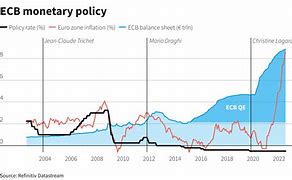
The euro is approaching its highest level of the year, buoyed by market expectations that the Federal Reserve (Fed) may outpace the European Central Bank (ECB) in reducing interest rates. This scenario reflects broader trends in global monetary policy and economic conditions, with potential implications for both currencies and international financial markets.
Table of Contents
Current Exchange Rate Dynamics
As of recent data, the euro has been strengthening against the U.S. dollar, approaching levels not seen since earlier in the year. This appreciation is partly driven by the growing anticipation that the Fed will implement rate cuts more rapidly compared to its European counterpart. The currency dynamics are a direct reflection of expectations about future monetary policy, economic growth, and inflation trends in the Eurozone and the United States.
Federal Reserve’s Policy Stance
The Fed’s current position is central to understanding the rise. Following a period of aggressive rate hikes aimed at combating high inflation, the Fed has signaled a shift in its stance, potentially leaning towards rate cuts if economic conditions permit. The rationale behind this potential pivot includes signs of cooling inflation, a stabilizing labor market, and a slowing economy that could benefit from more accommodative monetary policy.
Several factors contribute to the Fed’s decision-making process. Inflation, while moderated from its peak, remains a concern. However, recent data suggests that inflationary pressures are easing, which might give the Fed room to reduce rates without reigniting significant inflation. Additionally, economic growth has shown signs of slowing, which could prompt the Fed to lower rates to support economic activity and prevent a sharper slowdown.
European Central Bank’s Approach
In contrast, the ECB’s monetary policy is influenced by different economic factors. The Eurozone has faced persistent challenges, including slower economic growth and varying inflationary pressures across member states. While inflation in the Eurozone has also moderated, it remains a concern, particularly in countries where price pressures are still notable.
The ECB’s policy has been more cautious compared to the Fed’s. The central bank has been reluctant to signal imminent rate cuts, partly due to the need to address inflationary concerns and ensure economic stability across a diverse group of member states. Additionally, the Eurozone’s economic recovery from recent downturns has been uneven, which complicates the ECB’s policy decisions.
Market Expectations and Economic Implications
The differential in rate cut expectations between the Fed and the ECB has significant implications for currency markets. A more aggressive Fed rate cut strategy relative to the ECB’s cautious approach tends to weaken the dollar while strengthening the euro. This is because lower interest rates in the U.S. can reduce the appeal of dollar-denominated assets, prompting investors to seek higher returns elsewhere, including in euro-denominated assets.
For investors, this shift can influence portfolio strategies, impacting asset allocation decisions and capital flows. A stronger can affect the competitiveness of Eurozone exports, potentially impacting trade balances and economic growth within the region. Conversely, a weaker dollar can influence global trade patterns and capital flows, affecting investment decisions and economic relations between the U.S. and other countries.
Broader Economic Context
The broader economic context also plays a role in shaping market expectations and currency movements. In the U.S., economic resilience and a robust job market provide some justification for potential rate cuts without the fear of a severe economic downturn. In the Eurozone, the economic environment is more nuanced, with varying growth rates and inflationary pressures across different countries.
The ongoing geopolitical tensions, trade policies, and global economic uncertainties also impact currency markets and monetary policy decisions. For instance, trade relations between major economies and geopolitical events can lead to market volatility, influencing both the and the dollar.
Conclusion
In summary, the euro’s approach to its yearly high reflects a complex interplay of monetary policies, economic conditions, and market expectations. The potential for the Fed to outpace the ECB in rate cuts has been a significant factor driving the euro’s appreciation. As the Fed signals a possible shift towards more accommodative monetary policy and the ECB maintains a more cautious stance, currency markets are adjusting accordingly.
The differential in monetary policy responses between the Fed and the ECB will continue to shape the euro-dollar exchange rate, with implications for global financial markets, trade balances, and economic growth. As these trends evolve, both currencies’ trajectories will provide valuable insights into the broader economic landscape and the future direction of global monetary policy.







